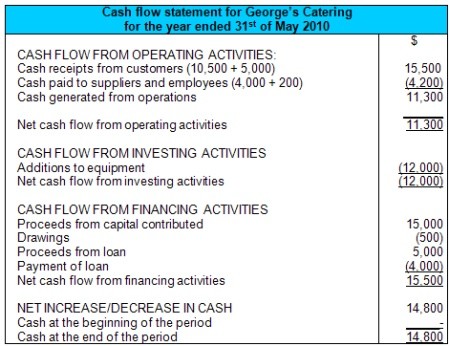Operating Cash Flows Accounting
Post on: 3 Июль, 2015 No Comment

Explore BrainMass
Please help me out with the following questions.
1- Operating cash flows rather than accounting profits are listed in Table 12- 1. Why do we focus on cash flows as opposed to net income in capital budgeting?
2 Explain why sunk costs should not be included in a capital budgeting analysis, but opportunity costs and externalities should be included. Give an example of each.
3 Explain why working capital is included in a capital budgeting analysis and how it is recovered at the end of a projects life.
END-OF-CHAPTER PROBLEMS
1- Required investment Truman Industries is considering an expansion. The necessary equipment would be purchased for $ 9 million, and it would also require an additional $ 3 million investment in working capital. The tax rate is 40 percent.
a. What is the initial investment outlay?
b. The company spent and expensed $ 50,000 on research related to the project last year. Would this change your answer? Explain.
c. The company plans to use a building it owns but is not now using to house the project. The building could be sold for $ 1 million after taxes and real estate commissions. How would that affect your answer?
2- Operating cash flow Eisenhower Communications is trying to estimate the first- year net operating cash flow ( at Year 1) for a proposed project. The financial staff has collected the following information on the project: Sales revenues $ 10 million Operating costs ( excluding depreciation ) 7 million Depreciation 2 million Interest expense 2 million The company has a 40 percent tax rate, and its WACC is 10 percent.
a. What is the projects operating cash flow for the first year (t 1)?
b. If this project would cannibalize other projects by $ 1 million of cash flow before taxes per year, how would this change your answer to part a?
c. Ignore part b. If the tax rate dropped to 30 percent, how would that change your answer to part a?
4-Depreciation methods Kristin is evaluating a capital budgeting project that should last for 4 years. The project requires $ 800,000 of equipment. She is unsure what depreciation method to use in her analysis, straight- line or the 3- year MACRS accelerated method. Under straight- line depreciation, the cost of the equipment would be depreciated evenly over its 4- year life ( ignore the half- year convention for the straight-line method ). The applicable MACRS depreciation rates are 33, 45, 15, and 7 percent as discussed in Appendix 12A. The company’s WACC is 10 percent, and its tax rate is 40 percent.
a. What would the depreciation expense be each year under each method?
b. Which depreciation method would produce the higher NPV, and how much higher would it be?
—-
6-New project analysis You must evaluate a proposed spectrometer for the R& D department. The base price is $ 140,000, and it would cost another $ 30,000 to modify the equipment for special use by the firm. The equipment falls into the MACRS 3- year class and would be sold after 3 years for $ 60,000. The applicable depreciation rates are 33, 45, 15,and 7 percent as discussed in Appendix 12A. The equipment would require an $ 8,000 increase in working capital ( spare parts inventory ). The project would have no effect on revenues, but it should save the firm $ 50,000 per year before- tax labor costs. The firms marginal federal- plus- state tax rate is 40 percent.
a. What is the net cost of the spectrometer, that is, what is the Year 0 project cash flow? b. What are the net operating cash flows in Years 1, 2, and 3?
c. What is the terminal cash flow?
d. If the WACC is 12 percent, should the spectrometer be purchased?














